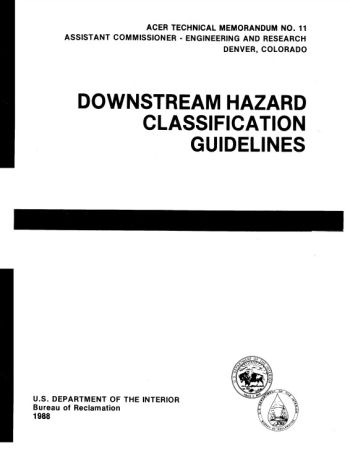Downstream Hazard Classification Guidelines (ACER TM 11): Difference between revisions
From ASDSO Dam Safety Toolbox
(Created page with "{{References Template |author= <!-- Add author/publisher below--> The United States Bureau of Reclamation |date= <!-- Add publication year --> 1988 |picture= <!--create a file below in format File:example.png, then add picture to that file--> File:ACER TM 11.jpg |link= <!-- Add Url to document below (To retrieve URL from a pdf, add document as a pdf file and copy link address from its page--> https://3.238.206.13/images/8/82/ACER_TM_11.pdf |abstract= <!-- Add do...") |
No edit summary |
||
| (One intermediate revision by one other user not shown) | |||
| Line 15: | Line 15: | ||
|link= | |link= | ||
<!-- Add Url to document below (To retrieve URL from a pdf, add document as a pdf file and copy link address from its page--> | <!-- Add Url to document below (To retrieve URL from a pdf, add document as a pdf file and copy link address from its page--> | ||
https:// | https://damtoolbox.org/images/8/82/ACER_TM_11.pdf | ||
|abstract= | |abstract= | ||
Latest revision as of 00:21, 17 December 2022
The United States Bureau of Reclamation, 1988

The purpose of this document is:
- To define the Safety Evaluation of Existing Dams (SEED) method for assigning a dam's hazard classification ;
- To provide guidance and present methods, for the purpose of downstream hazard classification, for estimating the downstream area susceptible to flooding due to a dam failure ;
- To provide guidance and criteria for identification of downstream hazards ; and
- To bring objectivity and consistency into downstream hazard classification
Revision ID: 5967
Revision Date: 12/17/2022
